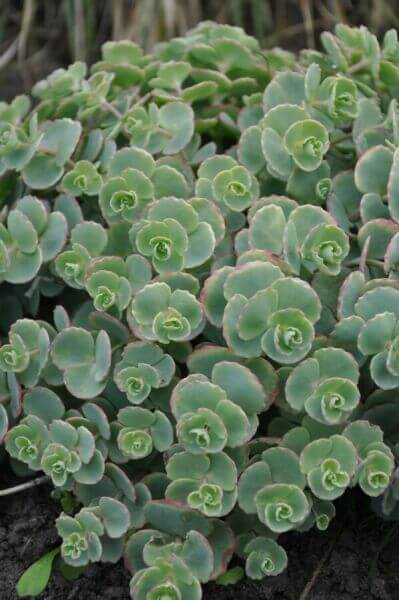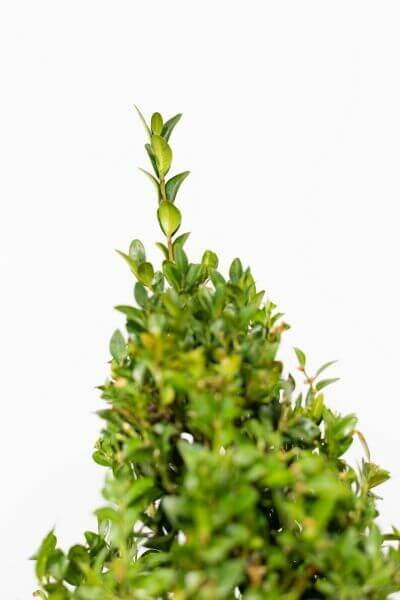Best Hedging Plants For Lush Borders
Best Hedging Plants For Lush Borders
Blog Article
Hedge Plants For All-year Screening
Boost your garden's allure with rich hedge ranges such as Yew (Taxus), Thuja, Laurel, Photinia, and Bamboo, commemorated for their structural stability and environmental advantages.
Yew and Thuja provide evergreen protection and winter strength, while Laurel uses fast development and broad, aromatic leaves.
Photinia adds seasonal appeal with its lively red foliage, and Bamboo lends a low-maintenance, peaceful atmosphere.
These hedges improve air quality, reduce sound, and create tranquil, private areas.
Correct planting, spacing, and upkeep ensure vigorous development and eco-friendly consistency.
Explore how these lavish ranges can raise your garden's beauty and wellness.
Key Takeaways
Transform Your Garden With Lush Hedge Ranges
- Select Yew for its thick, evergreen growth and unrivaled durability.
- Choose Laurel for its quick development and broad leaves, ensuring quick personal privacy.
- Select Photinia for its dynamic seasonal foliage, which turns a striking dark red.
- Make use of Bamboo for a low-maintenance, winter-hardy hedge with aesthetic appeal.
- Area plants 2-3 per meter and prune regularly for optimal growth and health.
Popular Hedge Plants
When changing a garden with lush hedge varieties, it's vital to think about popular hedge plants such as Yew, Thuja, Laurel, and Photinia due to their distinct characteristics and benefits.
Yew (Taxus) is highly esteemed for its longevity and thick, green growth, making it a prime choice for sustaining landscapes.
Thuja is noted for its evergreen foliage and robust winter strength.
Photinia adds seasonal vibrancy with red leaves that darken in time, producing dynamic visual appeal.
Laurel provides fast development and aromatic, broad leaves, perfect for fast personal privacy.
Additionally, Bamboo is an outstanding choice for atmosphere, providing a low-maintenance, winter-hardy choice that boosts the garden's aesthetic with its classy, swaying canes.
These choices cater to a range of horticultural requirements and choices.
Benefits of Garden Hedges
Garden hedges provide a wide variety of benefits, making them a valuable addition to any landscape. These natural barriers are affordable to execute and offer considerable wind security, enhancing air circulation and adding to sound decrease. The thick foliage of hedges like Thuja and Beech guarantees personal privacy by obstructing presence, producing a secluded and serene environment.
Hedges likewise play a vital function in microclimate regulation, supplying a stable environment that cultivates plant development and minimizes temperature fluctuations. Their detailed leaf structures filter pollutants, enhancing air quality and contributing to a healthier garden community.
Furthermore, hedges master sound reduction, taking in and deflecting sound waves to lower ambient noise levels. This double functionality of providing both acoustic and visual privacy improves the overall tranquility and aesthetic appeal of any garden.
Planting and Upkeep Tips
For a successful hedge, precise preparation of the planting location is essential. Guarantee the soil has appropriate pH and drain to support strong root advancement.
Space the plants properly for the chosen species. Water the hedge frequently during its preliminary development stage, changing as required with seasonal modifications.
Implement a methodical insect control and illness avoidance method, utilizing natural or chemical treatments when essential. Routinely examine for aphids, mites, and fungal infections.
Apply mulch to keep moisture and suppress weeds. Seasonal pruning promotes thick development and air blood circulation, necessary for plant health.
Following these standards will help you cultivate a vibrant, well-maintained hedge that enhances the beauty of your garden.
Spacing and Cutting Standards
Spacing and Trimming Guidelines
Proper spacing and cutting are essential for cultivating healthy, visually appealing hedges. Adequate spacing ensures each plant gets adequate nutrients, light, and airflow.
Follow these standards for ideal hedge maintenance:
- Spacing: Position hedge plants 2-3 plants per meter to motivate robust development.
- Pruning Methods: Regular pruning is essential for keeping preferred hedge height and shape. Trim brand-new growth in summer season and cut down older wood during winter.
- Seasonal Care: Change cutting schedules and methods according to seasonal requirements to guarantee plant health.
- Hedge Height: Regularly monitor and cut to maintain the preferred hedge height and achieve consistent visual appeals.
Adhering to these actions will ensure your hedge grows, improving both the appeal and functionality of your garden.
Choosing the Right Hedge
Selecting the Right Hedge
Selecting the proper hedge involves evaluating aspects such as fully grown height, foliage density, and environmental strength. Effective hedge plant choice requires comprehending each types' development characteristics and site-specific versatility.
For instance, Yew (Taxus) offers outstanding durability and thick growth, while Thuja is significant for its winter season durability. In addition, thinking about maintenance requirements is essential; fast-growing species like Laurel or Privet need routine cutting, whereas low-maintenance alternatives like Bamboo or Ivy may be more suitable for those looking for very little maintenance.
Ecological aspects such as soil type, light schedule, and wetness conditions need to likewise assist the choice procedure. This mindful technique makes sure the picked hedges will thrive, offering both aesthetic and functional benefits to the garden landscape.
Shipment and Planting Advice
To guarantee your hedge plants grow, they need to be delivered by specialized carriers and planted quickly upon arrival.
Follow these important steps for successful planting:
- Soil Preparation: Enrich the soil with raw material to enhance drain and nutrient material.
- Planting Depth: Produce a trench twice the width and equal to the depth of the root ball.
- Watering Strategies: Water completely after planting, keeping the soil consistently moist however not saturated.
- Mulching: Use a layer of mulch to maintain moisture and suppress weeds.
Consumer Support and Service
Given the vital role of timely help in horticultural pursuits, our customer support team is readily available six days a week through telephone, e-mail, and social media to use professional guidance and promptly attend to any concerns. Their devotion to quick action times guarantees customer complete satisfaction by resolving questions related to plant health, optimal planting techniques, and maintenance schedules.

Interaction Method
Within 24 hours
This thorough support group, strengthened by an excellent 9.3/ 10 consumer rating, highlights our commitment to improving the gardening experience for every single client.
Frequently Asked Questions
For How Long Does It Consider Hedge Plants to Develop?
Hedge plants generally require one to three years to become completely developed, with the specific period differing by types and growing conditions.
Effective care during this crucial duration is necessary for robust development. Consistent watering, vigilant weed control, and proper fertilizer Additional info application are critical in promoting strong root advancement.
For instance, fast-growing species like Laurel might develop quicker, while slower-growing ranges such as Yew might take longer. Persistent upkeep speeds up the facility procedure, resulting in healthy and dense hedges.
What Are the Finest Hedge Plants for Personal Privacy?
The concern of the best hedge plants for privacy involves assessing evergreen and deciduous options.
Evergreen hedges like Thuja, Laurel, and Cypress provide year-round protection, making sure constant privacy.
On the other hand, deciduous hedges such as Beech use seasonal personal privacy, shedding leaves in colder months.
Secret upkeep suggestions for personal privacy hedges consist of regular cutting, fertilizing in spring, and appropriate spacing-- generally 2 to 3 plants per meter.
Additionally, constant watering and persistent weed removal are vital for promoting healthy, thick growth.
Can Hedge Plants Bring In Wildlife to My Garden?
Yes, hedge plants can draw in wildlife to your garden by supplying vital benefits like shelter, food, and nesting websites, thereby improving local biodiversity. Yew, holly, and laurel are excellent for bring in birds, while ivy supports a variety of pests.
However, it's crucial to note that there are some disadvantages, such as increased maintenance to manage bugs and regular maintenance. Thoroughly choosing and keeping hedge varieties can assist stabilize these drawbacks and benefits, eventually fostering a sustainable and lively ecosystem in your garden.
Are There Any Flowering Hedge Plants Available?
Yes, there are flowering hedge plants readily available that can enhance the charm of your garden.
For instance, Elaeagnus, likewise known as Olive Willow, produces fragrant white flowers in the fall, including a touch of sophistication.
Photinia, another popular choice, showcases vibrant red leaves that develop into an abundant green, developing a dynamic visual effect throughout the seasons.
To guarantee these plants prosper, it's essential to practice correct pruning strategies and seasonal maintenance, such as trimming brand-new development in the summer season and cutting back in the winter.
These measures will help preserve the health and visual appeal of your blooming hedges.
How Do I Avoid Bugs in My Hedge Plants?
To avoid bugs in hedge plants, use natural pest control approaches and keep correct hedge care. Present beneficial insects like ladybugs, which prey on harmful pests, to create a balanced ecosystem.
Regularly inspect your hedges for indications of invasion and promptly remove any affected parts to avoid the spread. Make sure the health of your hedges by using well balanced fertilizers and offering sufficient water.
Use mulching to keep soil wetness and appropriate spacing to minimize plant tension and promote robust growth. These practices collectively help in minimizing insect concerns and keeping a healthy hedge.
Conclusion
In essence, selecting the best hedge varieties such as Yew, Thuja, and Laurel can transform any garden into a peaceful haven. These plants offer year-round greenery, enhance aesthetic appeal, and deal useful advantages like sound decrease and wind security.
Appropriate planting techniques, accurate spacing, consistent watering, and seasonal cutting are vital for optimum growth.
Trusted shipment services and professional client assistance guarantee a smooth experience from purchase to planting, making it easier than ever to elevate your outside space.
Garden hedges offer a wide range of benefits, making them a valuable addition to any landscape. These natural barriers are affordable to execute and supply significant wind defense, improving air circulation and contributing to sound reduction. The thick foliage of hedges like Thuja and Beech ensures privacy by blocking presence, developing a serene and remote environment.

Pruning Techniques: Routine pruning is necessary for preserving desired hedge height and shape. Cut brand-new growth in summer season and cut back older wood throughout winter.
Report this page